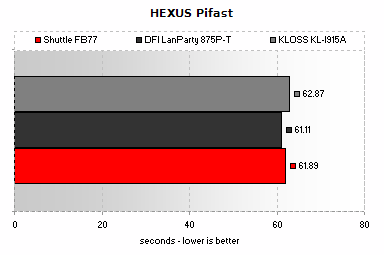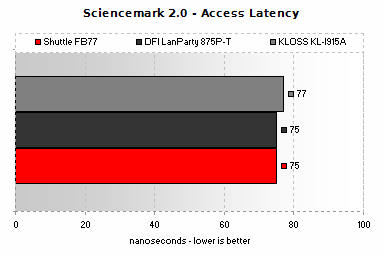Memory Tests
Memory tests let us determine whether or not the memory subsystem of the mainboard, CPU or complete system on test is working correctly and effectively. We use our own Pifast benchmark in conjunction with Sciencemark 2.0 to determine if that's the case.HEXUS Pifast

The Pifast score returned by the KLOSS is a second or so slower than the Shuttle due to memory controller and timing differences, although there's not much in it. A HEXUS Pifast score is made up from three factors: CPU frequency, memory controller and module speed and access latency. The memory controller and module speed can be shown as a measure of bandwidth and we can measure bandwidth and access latency using ScienceMark 2.0.
ScienceMark 2.0 - Access Latency

The memory controller and module timings see the KLOSS deliver an access latency a couple of nanoseconds slower than both i875P-based systems, which is to be expected. With tighter memory timings, the KLOSS would post a very similar result, i915G's memory controller doing a fine job with DDR.
ScienceMark 2.0 - Memory Bandwidth

Memory bandwidth is less as expected, but the difference isn't what I was expecting before I started benchmarking. I honestly expected the bandwidth result, given the memory timings and memory controller, to be further away. TriGem's engineers seem to be extracting good performance from i915G with the tested BIOS.









